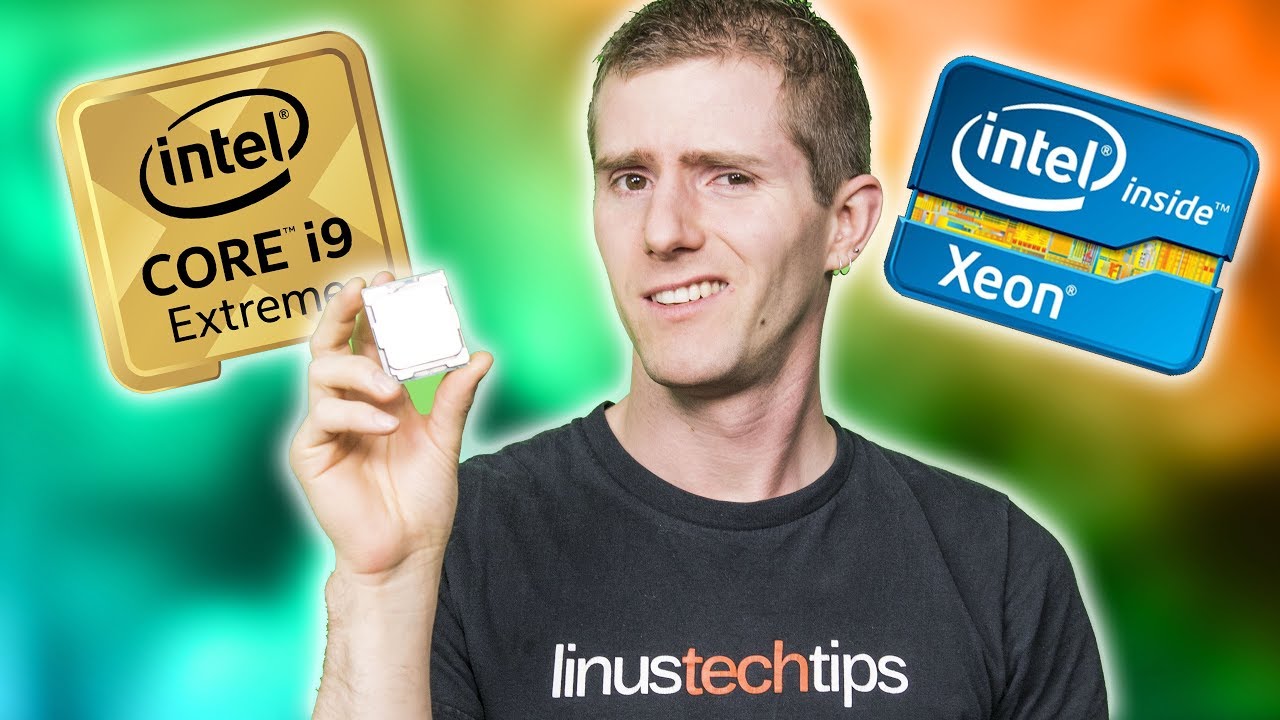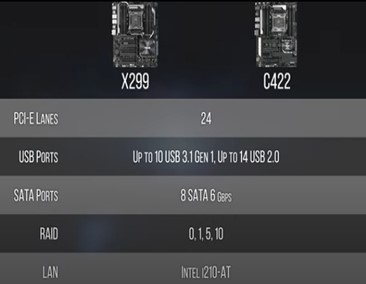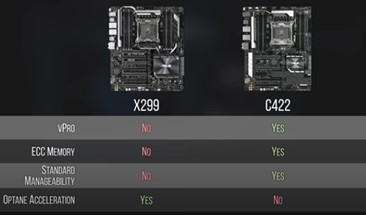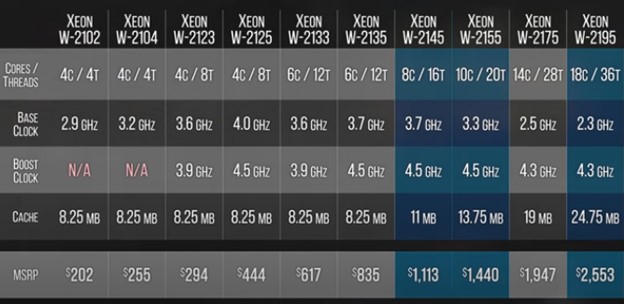
Intel Xeon W Workstation CPU Review
Check on YouTube
with two benches each running very similar ASUS workstation boards, the x 299 sage that is running the x 299 chipset and another one running an intel C422 chipset and a c422 board to run a Xeon W. with this chipset you gain the support for VPro whose claim to fame among other things is remote management with the convenience and vulnerability that comes around with that. What you lose is the support for intel Optane storage acceleration: otherwise they are pretty similar in their capabilities.


Specs Xeon w
512GB system memory- it should be noted that some x299 are compatible with registered DIMM meaning they can run 512G of RAM with a regular core i9
Intel ECC memory-which can check for and correct errors improving system reliability.
4 PCI express lane.
Have a turbo boost of 2.0 speed but don’t have support turbo boost max.
While running some benchmarks starting with our two eight core chips to see if there is something we have overlooked. Moving to other tests we see the slight different, a 100 MHT higher base clock makes for gaming actually giving Xeon w2145 an edge over its counterpart core i7.
For the heavy multi-threaded tests like blender the differences shrink down to a maximum of 16 seconds and don’t seem to get worse over time meaning the difference basically comes down to how high and long the chips boost during early of the run thanks to their slightly different turbo implementations.
After a chip swap onto our second pair, and just like our previous ones the differences aren’t exactly striking. Neither chip seems to gain firm advantage over the other and it’s a dead heat into our gaming tests. But again lightly threaded workloads favor turbo boost max and our numbers tighten up considerably when we pour the juice in the blender. This time a maximum delta of about a minute with 7 900 deus ex taking the crown on the gooseberry render.
For the heavyweights we shall have both systems loaded up with their 18 core variants. Surprisingly our 7980 wrecked the Xeon w2195 in dues ex thanks to its higher base and turbo boost clocks.
If the performance is as similar in real life as the spec sheets seem to indicate with neither the consumer chips pulling ahead in consumer workloads like games nor the workstation chips pulling ahead in workstation workloads it makes it pretty difficult for me to wrap my head around the reason that this line up of CPUs and this chipset exists.

Traditionally Xeon based on the consumer 11 xx sockets only had ecc as their main selling points but those came at a relatively small premium whereas again traditionally the expensive Xeons with many cores had the ability to run on dual socket boards as an easy justification but this generation lacks this capability meaning that unless you absolutely need the pro and ecc memory support the latter being something that AMDs entire line up from Ryzen 3 to thread dripper supports natively and the former being something that intel’s own consumer product support is mostly marketing but with a subtle undertone of extra Pci express lanes.
CONCLUSION.
Xeon has a lot more brand recognition than core in both workstation and enterprise space, but for as long as you don’t stand to lose $100 worth of work every time your system blue screens due to a bit flip we’re recommending to stick




This Post Has 0 Comments